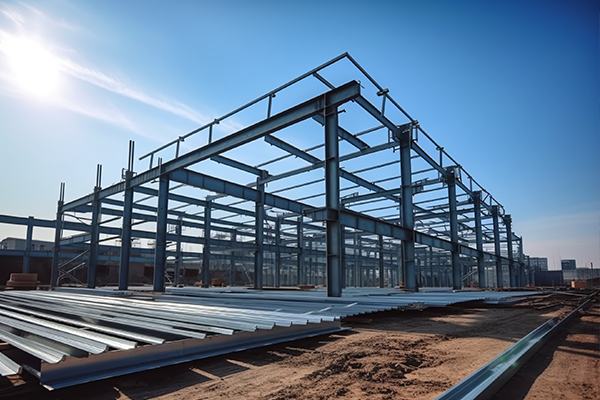NewsDetails
What are the contents of the technical disclosure for the construction of prefabricated houses?
author:Tianxing time:2024-07-04 11:15:09 Click:85
1. The construction of temporary activity board houses should meet the basic usage functions of temporary housing and be included in the scope of quality and safety supervision. After signing the construction contract, the construction will commence in accordance with relevant regulations and standards.
2. The selection should be based on the principles of safety, reliability, economic rationality, convenient construction, and reusability, combined with the requirements of building function, module, and enclosure structure.
3. According to the functional requirements of the building, use color steel sandwich panel lightweight prefabricated houses, portal frame lightweight steel structure prefabricated houses, or other lightweight steel structure houses that meet the structural selection requirements.
4. For the construction of activity board houses on grassland ground, the foundation of residential activity board houses should be directly connected with ground anchors (threaded steel or angle steel), and ground anchors (0.8-1.0m long) should be set on both sides every 1.0-1.5m along the steel trench, and welded firmly to the steel trench. Small rigid foundations should be used for office and other types of activity board houses. Small cement piers with a height of 0.3m x 0.3m x 0.7m should be installed at the four corners and main support points of the house. The steel trench should be welded to the embedded steel plate of the cement pier or fixed with expansion bolts. The concrete strength grade of the cement pier should not be lower than C20. The interior of the house is paved with sidewalk bricks, and plastic cloth is laid below to prevent moisture. After the transition is completed, the cement pier will be lifted and the sidewalk bricks will be transported for secondary use to restore the original ground. Rigid foundations or extended foundations can be used for construction in other areas.
5. According to the functional requirements of the building, the form of single and double slope roofs should be reasonably distinguished. For small spans (5m and below), single slope roofs should be used, without the need for steel frames. Color steel sandwich panels should be used in a lightweight assembly structure. The splicing of wall panels should use male and female ends overlapping, with steel buckle grooves added at the upper end. The thickness of the steel buckle groove plate should not be less than 2mm. When the span is large (more than 5m), the form of the roof (single and double slopes) should be determined according to the specific usage function, and steel roof trusses should be installed. The size of the steel roof structural components should be calculated and determined by the manufacturer.
6. The load-bearing steel components of the prefabricated house should be made of Q235 carbon structural steel or Q345 high-strength low alloy structural steel that meets national standards, and B-grade steel should be selected.
7. The outer wall panel adopts 100mm thick EPS polystyrene sandwich panel, the partition panel adopts 75mm thick EPS polystyrene sandwich panel, and the roof panel adopts 110mm thick EPS polystyrene sandwich panel; The thickness of the wall panel steel plate is 0.326mm, and the thickness of the roof panel steel plate is 0.426mm for the outside and 0.376mm for the inside; The double-sided galvanizing amount of steel plates should not be less than 120g/㎡.
8. The density of polystyrene board used for load-bearing sandwich panels should not be less than 15kg/m3; The density of polystyrene board used for non load bearing sandwich panels should not be less than 12kg/m3; All require the addition of flame retardants; The bonding strength should not be less than 0.1MPa.
9. The thickness of the color steel sandwich composite door is 50mm, and the windows are made of single frame double glass plastic steel windows. The roof, exterior walls, and windows should be able to prevent rainwater and melted ice and snow from entering the interior; The area of a single piece of glass for doors and windows should be less than or equal to 1.5 square meters.
10. The construction unit should establish a good project management team, prepare and implement the construction organization design based on the actual situation, fully consider the requirements of construction progress for personnel, materials, equipment, etc., prepare in advance, make sufficient arrangements, and complete the project on time with quality and quantity guaranteed. After personnel enter the site, they should carefully carry out quality and safety technical disclosure to ensure that construction personnel carry out orderly and civilized construction. During construction, special attention should be paid to the protection and restoration of grassland ecology. Construction waste and household waste on site should be collected and treated in a timely manner, and it is strictly prohibited to dispose of them randomly to pollute the environment. The construction unit should collect and organize technical data synchronously according to the construction progress, file them in a timely manner, and submit them to the local construction administrative department after completion and acceptance.
11. Construction sequence: site leveling - foundation construction - wall panel installation - roof panel installation - indoor moisture-proof layer laying - indoor floor laying - water, heating, and electricity installation - completion.
12. The components and materials used in the prefabricated house should meet the design requirements, the building materials should comply with relevant national standards, and there should be a factory certificate of conformity. Before the installation of the house, the supervision unit and the construction unit shall inspect the quality of the components, accessories, and connectors of the house that have entered the site. When the deformation or defects of the components and accessories exceed the allowable deviation, they shall be treated. Only after passing the inspection can the installation be carried out. The installation of wall panels should be smooth, the joints should be straight, the joints should be tight and even, the doors and windows should be firmly installed, and the locks, bolts, etc. should be complete and effective. The installation slope of the roof panel should meet the design requirements, the joints should be tight without warping, and the waterproof treatment should be effective. The bolts protruding from the roof should have waterproof washers, and the bolt heads should be waterproof treated to ensure no leakage.
13. After the structural installation is completed, check that the specifications, quantity, and tightness of the connecting fasteners meet the design requirements, the bolts are firmly fastened, the welding is firm without cracks, the wall panel joints are flat, tight, and firm, the doors and windows are firmly installed, the glass is not damaged, and the switches are flexible; There is no leakage during the inspection of the roof after rain.
14. After the installation of water and electricity facilities is completed, strict inspection should be carried out. The electrical lighting fixtures should be installed firmly and in a suitable position, and the sockets and switches should be in a suitable position and convenient to use; The installation of water supply and drainage pipes is firm, and there is no leakage after water supply.
 Recommended Products
Recommended Products
 Contact us
Contact us
—— Contact:Ms. Zhang
—— Tel:(+86)18399688883
—— Email:18399688883@163.com
—— Url:https://www.tianxingmaterials.com
—— Address:Horgos City, Ili Kazakh Autonomous Prefecture, Xinjiang, China







